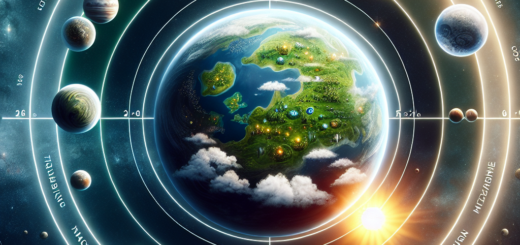Kepler’s Quest: A Decade of Discoveries in the Search for Other Earths
Kepler’s Quest: A Decade of Discoveries in the Search for Other Earths
For the past decade, the Kepler Space Telescope has been on a mission to search for planets outside our solar system, known as exoplanets, with the ultimate goal of finding other Earth-like planets that could potentially harbor life. Launched by NASA in 2009, Kepler has revolutionized our understanding of the cosmos and has made groundbreaking discoveries that have reshaped our view of the universe.
One of the most significant achievements of the Kepler mission has been the discovery of thousands of exoplanets, ranging in size from smaller than Earth to larger than Jupiter. These planets orbit around distant stars in what is known as the “habitable zone,” where conditions may be just right for liquid water to exist on the surface – a key ingredient for life as we know it.
In fact, Kepler has discovered several planets that are considered to be potentially habitable, such as Kepler-186f, Kepler-452b, and TRAPPIST-1e. These planets are similar in size and temperature to Earth, making them prime candidates for further study as we continue to search for signs of life beyond our own planet.
But perhaps the most exciting discovery made by Kepler is the realization that Earth-sized planets are actually quite common in our galaxy. This suggests that there may be countless other Earth-like worlds out there, waiting to be found and explored. The implications of this discovery are profound, as it raises the tantalizing possibility that we are not alone in the universe.
In addition to its discoveries of exoplanets, Kepler has also provided valuable insights into the formation and evolution of planetary systems. By studying the distribution and characteristics of exoplanets, scientists have been able to better understand how planets form around stars and how they migrate within their systems over time.
Unfortunately, the Kepler Space Telescope was retired in 2018 after running out of fuel, but its legacy lives on in the data it collected and the discoveries it made. Scientists are now combing through the vast treasure trove of Kepler data, looking for new exoplanets and studying their properties in more detail.
As we look to the future, new missions such as the Transiting Exoplanet Survey Satellite (TESS) and the James Webb Space Telescope promise to build on the foundation laid by Kepler and continue the search for other Earths. With each new discovery, we come one step closer to answering the age-old question: are we alone in the universe?
In conclusion, Kepler’s quest for other Earths has been a decade of remarkable discoveries that have expanded our horizons and deepened our understanding of the cosmos. As we continue to explore the vast unknown of space, the legacy of Kepler will inspire future generations of scientists to push the boundaries of knowledge and seek out new worlds beyond our own.













